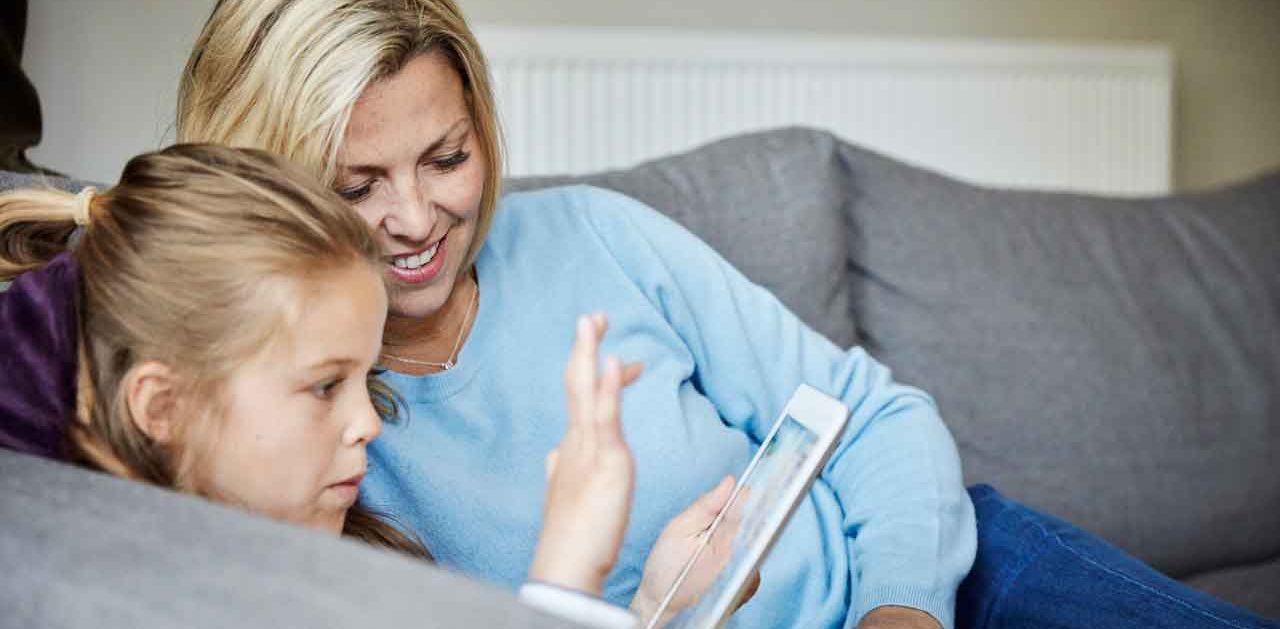February 02, 2018
Taking a Different Approach to Screen Time

The holidays have come and gone, no doubt leaving many households one or two devices richer. The selection of screen-based gifts seems to increase year to year. Now, Santa’s elves (or drones) can drop off game systems, smart phones, tablets, or augmented/virtual reality headsets. Opportunities abound to abuse the notion of an appropriate amount of “screen time” – one that is fluid at best in most households.
It’s a concept that some healthcare organizations have attempted to put guidelines around. The American Academy of Pediatrics (AAP) used to recommend that children two and under have no screen time, and that older children keep it to two hours or less. As one Forbes contributor recently pointed out, “[O]lder kids, as any parent of a 10 year-old can tell you, will blow through their two hours before their Minecraft sessions even get going.” (Can I get an Amen?!)
YOU MIGHT ALSO LIKE: Thinking Through Your Kid’s Technology Use
I’m not sure what prompted the change, but the AAP revised its guidelines in an effort to keep up with the constantly evolving tech times. They now encourage:
- Appropriate adult role modeling – set boundaries for yourself in terms of time and temperament so you don’t find yourself in a “But I learned it by watching you!” ‘80s PSA moment.
- Quality content – Yes, parents (myself included) can sometimes use screen time as a virtual babysitter. As the AAP suggests, try not to fall into the trap of letting your kids zone out in front of content that has no edifying qualities. While you’re getting the laundry done, make sure they are digesting something of value.
- Read the reviews – Don’t let your child download just any old app. Check out reviews and screen out those that don’t pass educational or moral muster.
- Don’t forget about playtime – Unplug the devices and get your kids involved in imaginary play. The phrase “I’m bored!” is actually a sign you’re on the right track. Kids need to understand that life isn’t about instant media gratification 24/7.
- Set limits – As with all things in life, limits are important. I’ll add that sticking to those limits may be even more so. One day of 30 minutes of screen time followed by a succession of binge sessions will leave kids confused and parents frustrated.
These recommendations seem to be fairly common sense, but as every parent knows, putting them into practice can take finesse (and maybe even a bribe or two). As my some of my Facebook friends of parenting age have admitted, they have tried setting screen-time limits to little avail. “I did not and regret every minute of it with my 17-year-old,” admits one mom, while another believes her efforts failed because she didn’t have backup activities in place. Other parents have turned to third-party solutions like the Kidslox Screen Time Parental Control app to set pre-determined limits on their children’s devices. One dad tells me that certain routers will even allow you to set time limits by device.
It seems like the majority have seen success with their screen time-limiting efforts, especially when combined with consistent pushes towards other activities. “We try to make sure they have plenty of books to read and non-tech to do,” says another mom. “Also, we allow unlimited reading time, so that helps!” (Time spent with a good (paper) book always trumps screen time, in my opinion.)
As with anything related to our children, we parents must be the architects of our family’s screen time strategy. While guidelines have their part to play, something tells me it’s the attention of mom and dad that will truly turn kids’ interest away from their devices to activities that don’t require a long batter life. Set limits and then go have some fun!
YOU MIGHT ALSO LIKE: Apps Help You Make the Most of Your Mental Health in 2017


